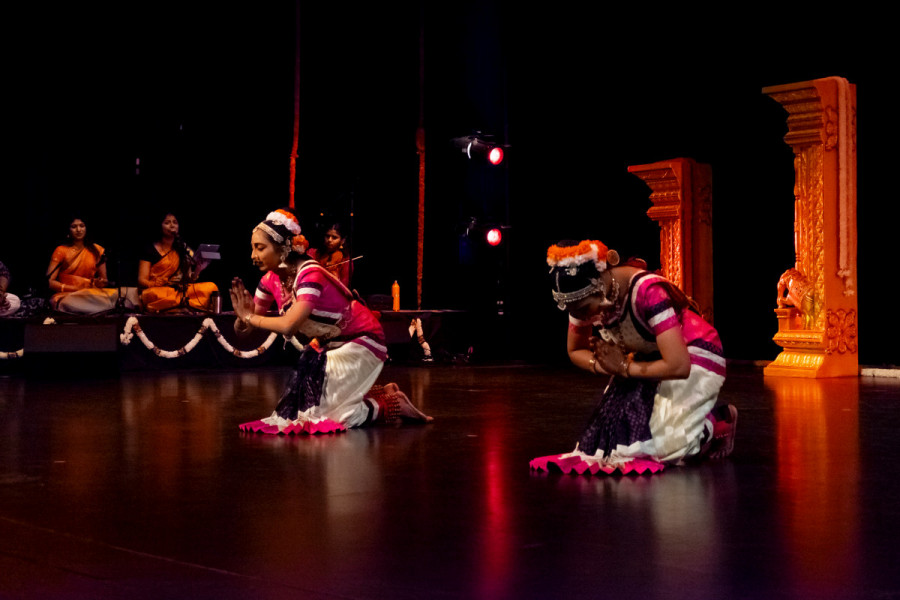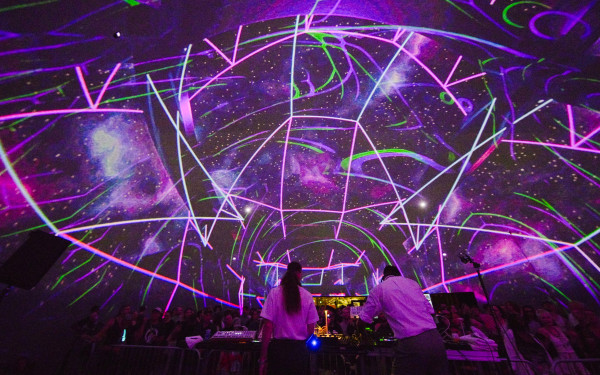Natyanjali festival celebrates 10 years of Indian classical dance
The Montreal festival unites North American artists through Indian classical dance
The Montreal Natyanjali dance festival celebrated its 10-year anniversary on March 29 at Ahuntsic College, captivating audiences with Indian classical dance performances and live music.
From the rhythmic precision of Bharatanatyam to the expressive storytelling of Kathak, the festival showcased the richness and diversity of India’s artistic heritage.
Inspired by Natyanjali tradition, the festival honours the grace and storytelling of Indian classical dance traditions. “Natyanjali” means an offering to the divine in the form of dance performances. The word comes from the Sanskrit words “natya,” meaning dance, and “anjali,” meaning offering.
Founded by Deepa Nallappan, artistic director of Param des Arts, the festival was created to provide a space for artists to connect together.
When Nallappan approached local community artists with the idea of creating a celebration, she was inspired by their enthusiastic response.

”I saw the openness,” Nallappan said. “I saw that they were also willing to be part of it.”
Over the years, the festival has become a significant part of the preservation of Indian classical dance across Canada and the United States. Natyanjali’s significance goes beyond the stage, giving attendees and participants a sense of cultural connection.
“ It's bringing all the artistic communities to work together, to collaborate together, to be like a bigger artistic family,” Nallappan said.
Natyanjali not only provides opportunities for existing artists to inspire emerging artists, but also creates a “pathway” for younger audiences to stage performances and shape themselves, according to Nallappan.
Attendees get a sense of what Indian classical dance form involves and how it connects to deeper cultural expressions.
For Nallappan, it is important that attendees leave with a sense of having learned something new.
“Most importantly, something they felt within,” Nallappan said. “Even if they didn't understand, but they felt it.”
The festival began with board members and senior dancers paying their respects to the Nataraja god, an act that is essential before Bharatanatyam performances.
Artists from across Canada gathered to showcase their performances.
This year, the Nruthiya Saagaram school of dance from Halifax had the opportunity to perform a Pushpanjali dance. Their guru, Nithya Babou, choreographed the piece. The musical performance blended elements of Hinduism, Christianity and Islam.
“We always wanted to represent Atlantic Canada and showcase our performance here in Montreal,” Babou said.

Babou highlighted the importance of cultural connection and the role of festivals in fostering that bond.
“Through culture, we connect to our roots to understand who we are,” Babou said. “Festivals like this [...] give us the opportunity to connect and appreciate what we currently have around us.”
For volunteers like Gayatri Tribhuvan, being able to represent and share her culture is a rewarding experience.
“It's wonderful to be able to share a culture to the world and show how rich the Indian heritage is,” Tribhuvan said.
For many, the biggest takeaway is the opportunity to share and connect over tradition with first-time and returning audiences.
“Montreal is bringing everything to one spot,” Babou said.
“It’s become like a routine for us now, doing it for 10 years,” Nallappan said. “It's part of us.”


_600_832_s.png)



Frédérique_Ménard-Aubin-8588_(1)_(1)_1_600_375_90_s_c1.jpg)
_1_600_375_90_s_c1.jpg)